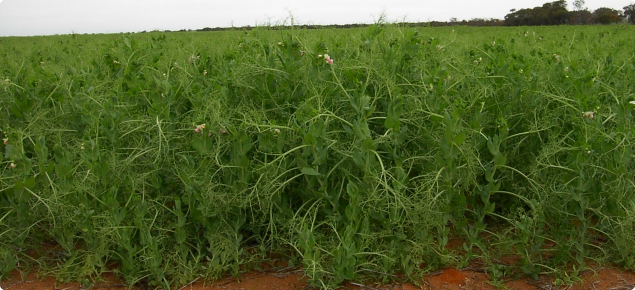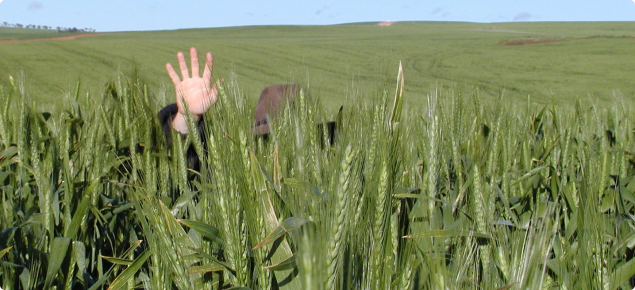Paddock selection
When selecting a paddock in which to grow field pea you need to consider the following points:
Soil type
Field pea can be successfully grown on a wide range of soil types, but prefer sandy loams or heavier, and pH (measured in CaCl2) above 5.0. Duplex soils with neutral to alkaline subsoils are suitable if they do not become waterlogged, although the sandy surface may pose an unacceptable erosion risk after harvest. Field pea does not tolerate salinity or waterlogging well, so avoid soils where these are likely.
Blackspot risk
This is largely determined by the rotational history of the paddock, and of surrounding paddocks. Choose paddocks that have not grown field peas for at least three years, and go no closer than 500 metres (m) to paddocks that grew field peas in the previous year. It is preferable to be at least 50m downwind of two and three year old stubbles, but no separation is necessary upwind of these older stubbles.
Surface condition
This has important implications for ease of harvest and soil erosion after harvest. Avoid paddocks with a rough or uneven surface that will be difficult to follow closely with the header front and avoid paddocks with stones or stumps that could be picked up by the header. These can cause considerable damage if they pass through the threshing drum. Some obstacles are acceptable if they are buried by rolling post-sowing. Avoid paddocks with loose surface soil if it will be exposed to strong winds after harvest.
Herbicide residues
Field pea is sensitive to residues of sulfonylurea herbicides that may have been applied to a preceding cereal crop, so avoid paddocks where this will be a problem. Residues are likely to be greater on alkaline soils, and after a dry growing season and a dry summer. Sulfonylurea herbicides also differ in their breakdown rates. Information on persistence and safe withholding periods is given on the herbicide label and should be consulted.
Weed population
Field pea is not a strong competitor with weeds, so the best paddocks will have low weed burdens, especially of broadleaf weeds. However, remember that the ability to plant late means that some cultural weed control is usually possible and that there is a greater range of post-emergent herbicides available for use in field pea than in other pulse crops.
Frost risk
Frost during early pod filling can cause devastating yield losses in field pea. Avoid paddocks with a high probability of frost from 1-3 weeks after flowering.


